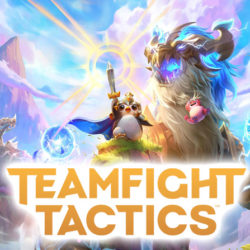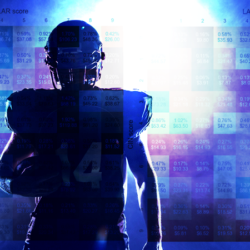
At SIG, we most often compare trading to games of imperfect information, such as poker, where players possess different sets of information. This is in contrast to games of perfect information, such as chess, where players know everything about an opponent’s position and can respond sequentially to each of the opponent’s actions.
With this in mind, fighting games seem like an unlikely candidate to be compared to trading. Fighting games (such as Super Smash Brothers) are video games in which players control on-screen characters that engage in combat with each other. Since the action occurs on screen for everyone to see, at first it may seem like fighting games are games of perfect information, like chess. However, a key difference between chess and fighting games is that fighting games are not turn-based. Since actions occur in real time, human reaction speed can potentially be a limiting factor for some strategies.
One useful way to think about these games is to consider the following two situations separately: one in which an opponent’s actions can be reacted to, and one in which these actions cannot be reacted to.
The first can be thought of as a game of perfect information, where an opponent’s action is enough of a commitment that we have ample time to respond. Consider an instance where our opponent has whiffed a slow attack and is in “lag,” temporarily unable to do anything else. The game has become momentarily “turn-based,” since we can land a hit on him before he exits lag. This situation is like observing a chessboard and pondering the best move. Depending on how much damage he has, his position on stage, and our ability to combo him using different moves, we select the best attack from our character’s options.
In situations when an opponent’s potential set of actions cannot be reacted to, it is like playing a game of imperfect information. Our opponent has many options, and only he knows which one he will choose. However, just as in trading or poker, we can think of the option he ends up choosing as drawing from a probability distribution, conditioned on how he has previously acted in similar situations. Then, if we can assign payoffs to each of our potential counters based on what our opponent does, we can determine the best response.
Let’s discuss a simplified example where our character and our opponent’s character are standing next to each other, and we’re deciding what action to take in a situation where each available option is too fast to react to. Assume that each character can attack, grab, or shield. Attack beats grab, grab beats shield, and shield beats attack. Assume that our only goal is to maximize expected damage. Damage occurs according to the following table, and our opponent is equally likely to throw each of these moves:

(A positive number means we deal damage to the opponent, and negative means we take damage. For instance, if we attack and our opponent grabs, we win the exchange and deal 15 damage.)
Because our opponent uses each option with equal likelihood, the expected value of attacking can be calculated as (1/3)*0 + (1/3)*15 + (1/3)*-30 = -5 damage, and similarly for grabbing and shielding. In this scenario, grab is the best response, with an EV of 10 damage. This makes intuitive sense since a successful grab has the highest payoff.
But what if our opponent stops using each option equally? Traders often need to think in terms of conditional probability, the probability of an event given that another event has occurred. The same is true in fighting games if the opponent is a thinking, adapting player. If we keep using grab whenever a particular situation comes up, a smart opponent will start to shield less and attack more. Conditioned on the fact that we’ve grabbed a few times in a row, our opponent acts differently, and now the probability that he’ll throw each move has changed.
Situations in fighting games are usually not so “rock-paper-scissors” as the example given. For instance, characters have the ability to use non-interactive options like running away, which would have a payoff of 0 to all of our options above, but this allows us to take a more advantageous position on stage. Players also try to bait their opponent into incorrectly committing to “laggy” moves. This way, they temporarily stop playing a game of uncertainty and can simply focus on punishing their opponent’s mistake. There is also the constant jockeying for position—players want to put themselves in situations where payoffs are skewed in their favor.
There are numerous mini-strategies within fighting games, and they all involve some elements where human reaction time is not quick enough to simply wait and see what the opponent does. Having a strong understanding of the opponent’s options and tendencies is key to coming out on top in these situations.
To draw a parallel to trading: at SIG we don’t just rely solely on reaction speed as the differentiating factor for our traders’ decisions or our automated decisions. Many of our profitable trading strategies stem from understanding the different players in the marketplace, their motivations, and their tendencies.




Subscribe Now
Get each new post sent straight to your inbox